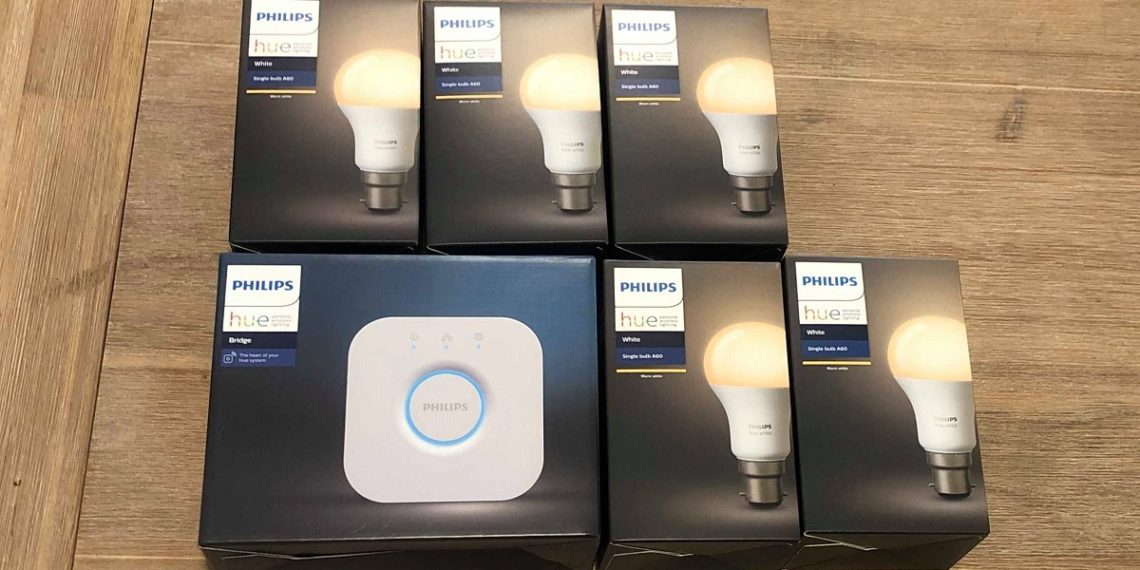As we live in a newly built house, I wasn’t in a big rush to start upgrading everything to smart lights, however, my sister and father had been talking about some great specials on Philips Hue lighting at Bunnings Warehouse as part of their Black Friday weekend sales. These specials were enough to convince us to start upgrading a few lights in our home and allowed us to buy items individually for cheaper than the usual starter bundles.
As much of our house has downlights we found we only had a few options for the easy to install bayonet lights. This was the laundry, walk-in wardrobe, front porch and out the back. We will consider replacing the downlights in the future. I don’t really want to waste these brand new ones that came with the house.
We ended up buying 5 Single Bulb A60 and the hub separately. We had to try several stores to find them in stock as everyone else was also jumping on this great deal.
Instructions to set up Philips Hue Smart Lights
Every bulb has a unique serial number on them. It is best to install and set up each of the lights one at a time as you will not know which serial is which unless you take a photo or write them down. I started taking photos but found it was just faster to set up each bulb one at a time.
- Ensure Philips Hue app is installed and you must already have the Philips Home Hub installed and connected to your phone.
- Replace the bulb and power it on at the wall.
- Open the app and go to “Settings” then tap “Light Setup”.
- It will now ask you to type in the serial number or you can press a button to search. Press search.
- Rename the new light from its default name which will be something like “Hue white lamp1” to something descriptive.
- Choose an icon that represents the type of light fitting.
- Go back to the main menu and set up a “Scene”. I suggest each scene be a different room of the house, or a group of rooms in the house. A light can be part of multiple scenes and scenes can contain multiple lights.
How to Connect Philip Hue to your Google Home app
Once you have done this and you can control your lights you need to go to the Google Home app.
- Go to settings in the Google Home app.
- Add… devices, speaker group, service.
- + Set up device.
- Then select “Works with Google – Have something already set up? Link your home services such as Philips Hue and TP-Link”
- Select Philips Hue and follow the prompts. Once the connection is made, any additional Philips Hue lights will automatically be added and usable via your Google Home apps and devices.
How do we control the Philips Hue Smart Lights?
We have a few Google Home Minis in our house. We added each of the Philips Hue lights to the Google Home app and we can now control these lights with our voices. We say things like “Hey Google, turn on the laundry light” or “Hey Google, turn off all the lights”. We can also use either the Philips Hue app or the Google Home app to control the lights from anywhere. For example, we could be out late at night and use an app to turn on some of the lights so it looks like we are home. Or to leave the porch light on for when we arrive home.
Are smart lights more convenient than regular lights?
So far, I’ve found that smart lights are really convenient for outside the house. The ones we have inside can be slightly annoying if we want to use the physical light switch on the wall. You see, the wall-switch needs to be left in the “on” position for the apps to be able to control it. Whenever you go to use the light with your hand, you have to turn it off and back on again. Then to turn it off again so that the apps can continue to control it, you’ve got to turn it off using your voice or the app. I believe the solution to this problem is to buy the Philips Hue Wireless Dimmer Switch with Remote. I had overlooked this accessory at first. I didn’t realise it was battery-powered and does not need to be installed by an electrician.
A word of warning about Philips Hue
Whilst these devices are great, be warned you will probably need to keep spending on extra things you were not anticipating. Buying the smart switch now appears like an essential purchase. The outdoor sensor light also looks like a must. On the upside, these battery-powered smart switches can be installed yourself without an electrician. Which means these are much cheaper alternatives to conventional dimmer switches and sensor lights.


